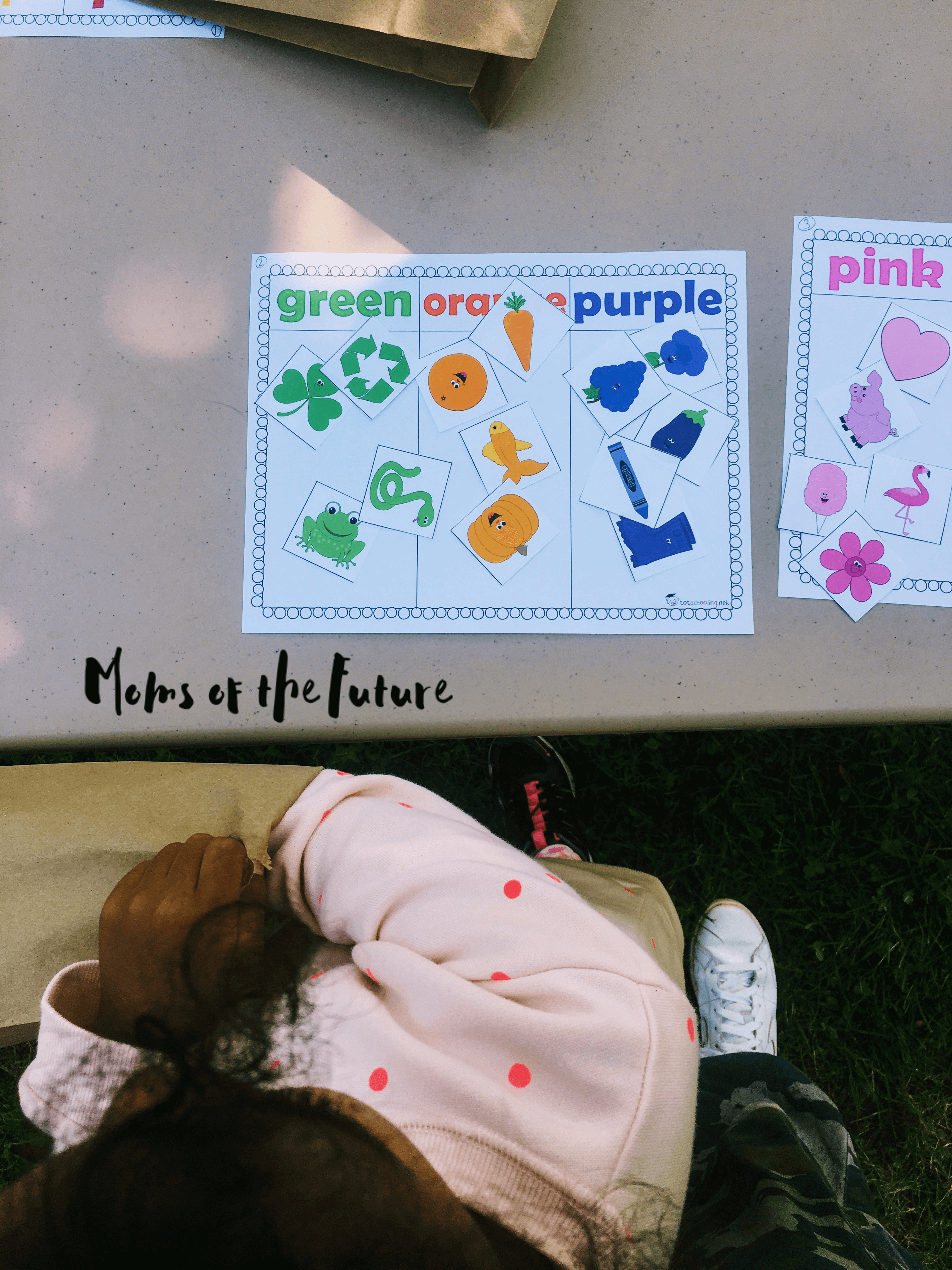Sorting real images is an activity that both toddlers and preschoolers can gain a lot. In the process of sorting, children learn how to categorize, group similar items together, and compare differences between objects.
Why sorting plays an important role in children learning
Sorting activities play an essential part in children learning journey. In fact, children naturally are drawn to grouping and sorting on their own. Whether it's grouping things by color, shape or size, it's one of their instinctive ways to learn about the world around them.
When it comes to sorting activities, children gain many benefits as they are challenged in more than one way. Sorting and grouping require children to use their reasoning and problem-solving skills.
Grouping, categorizing, and organizing items based on similarities and differences also develop math and literacy skills. It's truly a winner!
The inspiration behind sorting real images
When I take my children to the library, they can spend hours ruffling through pages of books on various subjects. They just love going through pictures and pictures of animals, plants, nature, buildings, and even recipes.
I always preferred my kids to look at real pictures, and photographs to support their learning journey. Whenever I showed them a picture, the reaction I received was different whether it was a picture of a real animal or an illustrated one.

Illustrated images are subjective and can have underlined biases
Illustrated images are subjective, and often, linked to underlined subconscious expressions of bias, for example, animals given racial, biased attributes. and often linked to underlined subconscious expressions of bias, such as
In general, animals would have lashes or makeup, sometimes expressions of sadness, happiness, or anger, which the learning child will naturally pick up on.
One time, looking for a worksheet for my daughter about colors, I came across these illustrated crayons that had facial expressions. All of the crayons had positive facial expressions like happy or surprised, except the black crayon. Instead, the black crayon was scary and mean. Children pick up on that, and for that reason, I stick to beautiful, real images when creating or using learning materials.

Using real pictures makes the activity more engaging.

Using illustrations can be fun but also limiting and subjective.
My son always asks, me "Why are the big dinosaurs in books girl dinosaurs? I want to see boy dinosaurs." This makes sense. He's a boy and wants to see himself in a dinosaur version where he is strong and powerful. It is natural, children associate with the character they see. If a child sees the image of a cow, then it's a cow. If they see an illustrated image of a cow, then it becomes a character. And naturally, children associate with characters and become emotionally involved with those characters which can eventually influence their learning journey.
Real images support a more engaged learning experience
When it comes to learning about nature elements, science, and geography, I truly believe looking at real pictures has a stronger impact on their learning and curiosity than the illustrated picture.
For example, looking at the illustrated image of a tornado doesn't show the different types of tornados, the strong winds, or the colors of those menacing clouds. Images and photographs on the other hand can.
Real images are used in later education already so why not implement them in early childhood education?

Real pictures are just that; "real". Without any addition, embellishments, or alteration, Nature is beautiful just the way it is and children connect with that. For that reason, when I began creating educational material for my children, I was inspired by their learning, their behavior, and their motivation. I noticed what they liked and disliked; and in any given activity wether it was collaging, sorting, matching, or observing, real images caught their attention and sparked their curiosity.
Real pictures are just that; "real". Without any addition, embellishments, or alteration, Nature is beautiful just the way it is and children connect with that.
Therefore, when I created a sorting color activity for my youngest, who is 5, I thought to myself, maybe she is a little bit too old for that. After all, she knows her colors now. However, I decided to follow through with my instinct anyway and I'm glad I did.
My daughter and I shared an amazing moment together, not only sorting the pictures in the appropriate column, but also talking about certain animals, or how she wishes to ride a purple car and remembering those lavender bushes she sees everywhere in the summer in our neighborhood.
We shared an amazing moment of conversation, laughter and love.

How this activity is planned
For this awesome activity, I have collected very colorful pictures in high resolution and made big columns so they can be easily sorted. I let my youngest sort the pictures in the appropriate color column which allowed her to work on her motor skills. During the activity, she also attempted spelling certain words and asked about certain cards. She especially liked the multicolor column!
Why this activity is suitable for your child(ren):
It has elements of Montessori: In this activity, the child is invited to sort colorful images in the appropriate column in a fun and engaging way. They learn to categorize, organize, and notice differences and similarities.
It is Sensory: Children use their touch senses to pick the images and place them on the appropriate column. It also improves their visual perception.

You can replicate this activity with any images you have laying around.
You can use some old books, and magazines or cut them out from ads, or print pictures of your choice.
If you don't feel like doing all of that (we've all been there), you can head over to my Etsy shop where you can purchase this activity.
